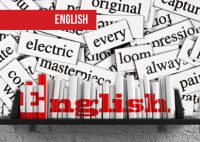Sentence Rearrangement for SBI PO : Set 20

Sentence Rearrangement for SBI PO : Set 20
| Directions: Rearrange the given five sentences A, B, C, D and E in the paragraph sequence so as to form a meaningful paragraph and then answer the questions given below them. | ||||
| A. One evidence of this is that many highly intelligent people are very low on creativity. | ||||
| B. In other words, they may find replicating a process very easy but creating a process difficult. | ||||
| C. But it is unfortunate that in many organizations those who replicate are rated high and promoted over creators. | ||||
| D. Intelligence and creativity are two different things. | ||||
| E. They may understand the things very fast but are poor if any new things are to be developed. | ||||
| 1. Which of the following will be the SECOND sentence? | ||||
| (a) A | (b) B | (c) C | (d) D | (d) E |
| 2. Which of the following will be the FIFTH sentence? | ||||
| (a) A | (b) B | (c) C | (d) D | (d) E |
| 3. Which of the following will be the FOURTH sentence? | ||||
| (a) A | (b) B | (c) C | (d) D | (d) E |
| 4. Which of the following will be the FIRST sentence? | ||||
| (a) A | (b) B | (c) C | (d) D | (d) E |
| 5. Which of the following will be the THIRD sentence? | ||||
| (a) A | (b) B | (c) C | (d) D | (d) E |
Answer Key:
1. (a) 2. (c) 3. (b) 4. (d) 5. (e)
| A. The socialization function of the family is a generalized one and is aimed at preparing us for membership of kinship group and the community. | ||||
| B. The family is only one of the varieties of agencies of socialisation. | ||||
| C. In other words, through the socialization process we learn the basic facts necessary for the performance of a variety of social roles in the society in which we grow up. | ||||
| D. Socialisation is the process by which cultural, social and moral values and beliefs are transmitted from one generation to the next. | ||||
| E. The way in which the process operates will depend largely upon the views taken by the parents of what their children ought to be like when they are grown up. | ||||
| 1. Which of the following will be the FIFTH (LAST) sentence after rearrangement? | ||||
| (a) A | (b) B | (c) C | (d) D | (d) E |
| 2. Which of the following will be the THIRD sentence after rearrangement? | ||||
| (a) A | (b) B | (c) C | (d) D | (d) E |
| 3. Which of the following will be the FIRST sentence after rearrangement? | ||||
| (a) A | (b) B | (c) C | (d) D | (d) E |
| 4. Which of the following will be the FOURTH sentence after rearrangement? | ||||
| (a) A | (b) B | (c) C | (d) D | (d) E |
| 5. Which of the following will be the SECOND sentence after rearrangement? | ||||
| (a) A | (b) B | (c) C | (d) D | (d) E |
Answer Key:
1. (e) 2. (a) 3. (d) 4. (c) 5. (b)


